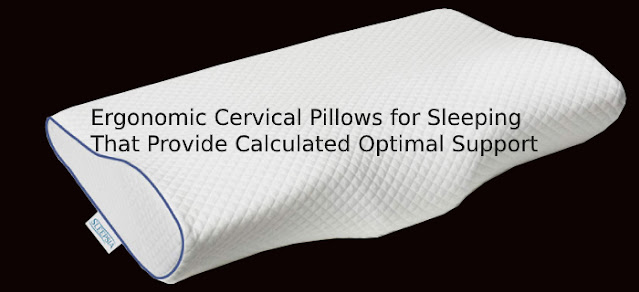The majority of individuals sleep inside posture and this tendency increases as we grow older along with greater periods of posture immobility lasting between 45 and 110 minutes. Having a proclivity towards greater immobility, the best selection of ergonomic cervical pillows is essential in order to prevent the adverse consequences of altered sleeping posture.
Even though escalating periods of immobility tend to be observed, adults tend to change postures eleven to thirteen times every night. It is therefore important to utilize pillows that use ergonomic principles to achieve the best reduction of anatomical stress to maximize pain reduction and restorative sleep. Functional pillows seek to achieve this goal.
Inadequate head position throughout the night impacts pain susceptible structures connected with the cervical spine and may result in stiff muscles on waking, headaches, as well as shoulder and/or arm numbness, tingling, or pain. Cervicogenic headaches are usually associated with the top segments of the neck or upper cervical spine, whereas shoulder and arm pain may be referred through the lower segments; therefore ergonomic cervical pillows should offer support for all related spinal elements.
Consequently, pillow posture might be associated with distinct regions as headaches may suggest rotational torsion coming from pillows that don’t give you the proper neutral position within rotational planes, whereas shoulder and/or arm discomfort might point to pillows that lacking support within sagittal or back/front planes.
Similarly, pillows that are ergonomically designed must also supply support within the right and left flexion plane that may relate to shoulder as well as arm pain and/or pins and needles. Within the side posture using the left side upward, pillows that are situated too high might result in excessive stretching out from the right side of the shoulder and neck muscle groups, and compress nerves and/or blood vessels associated with the left side with the neck.
Common human health problem consists of pain and tension in the head, neck, and shoulders. This problem may arise in an otherwise healthy person due to improper support of the head, neck, and shoulders during sleeping. Additionally, many injuries and conditions, such as whiplash, sprains, strains, and arthritis and disc syndromes may increase the need for optimal head and neck support during sleeping to promote healing or reduce flare-ups. The pain and tension may cause associated problems such as insomnia, restlessness, light sleep, and snoring.
Ergonomically, the best position of the neck is called the neutral position. This position corresponds substantially to the most anatomically natural position of the cervical spine of a person who is standing upright with correct posture. In the neutral position, the lord tic curve of the neck is maintained such that the least stress is placed on the cervical vertebrae and surrounding connective tissues and the minimum amount of stress is maintained.






No comments:
Post a Comment